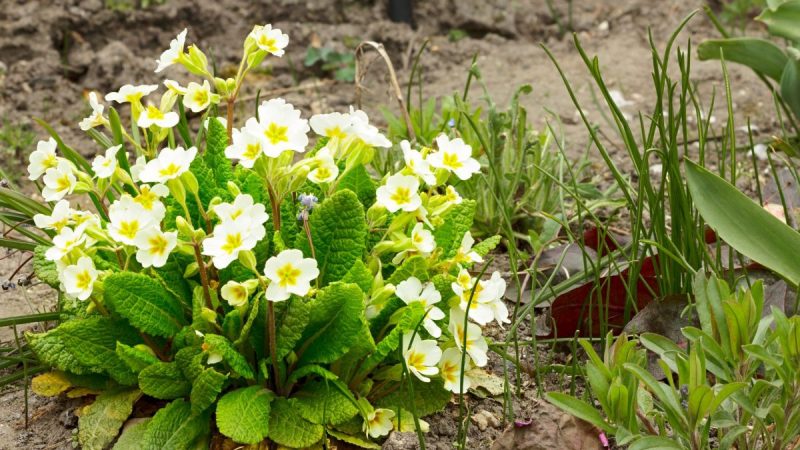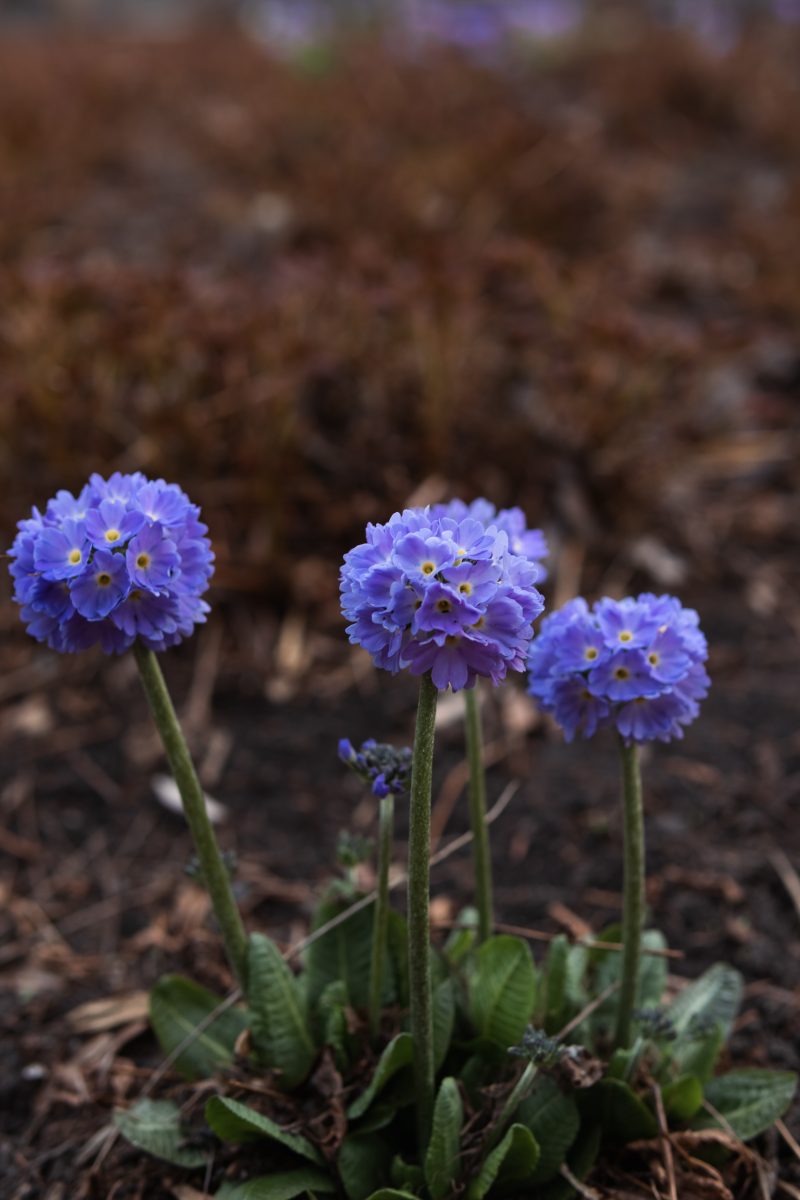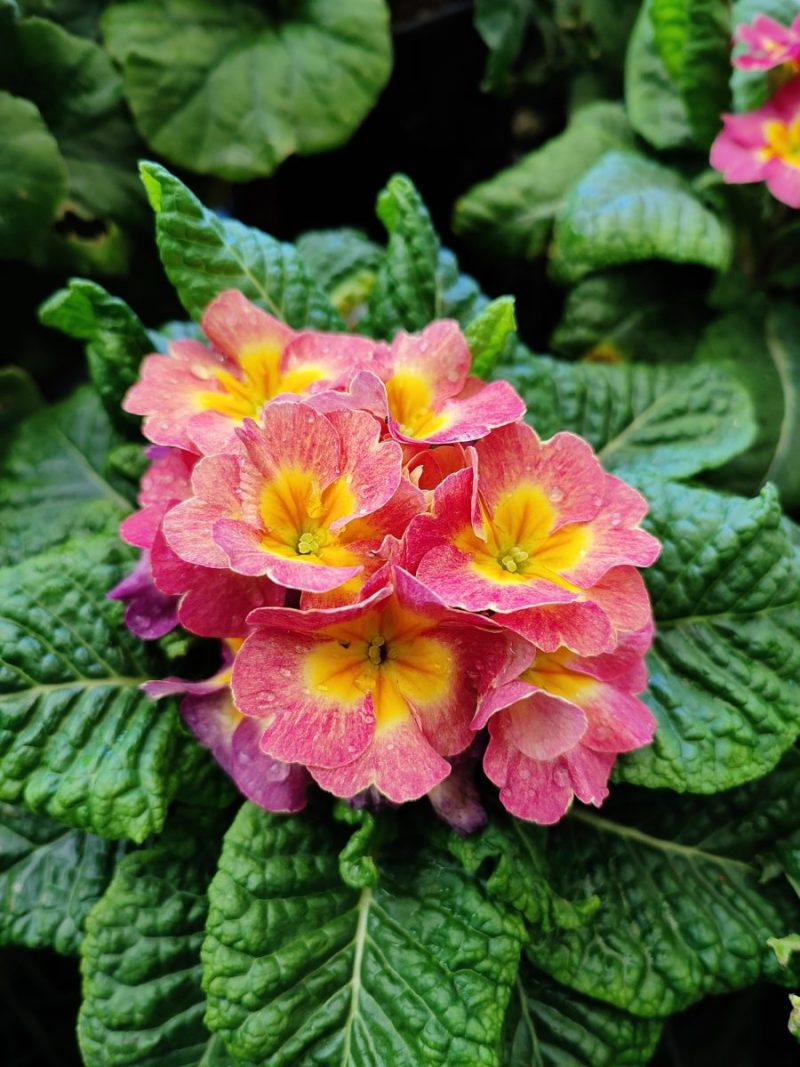Primula, planting guide and care work

Primula, a genus that encompasses over 500 species and a plethora of hybrids and cultivars, is a delightful addition to any garden or home décor. These cheerful flowers can be grown as either annuals or perennials (with a lifespan of up to 5 years under ideal conditions), bringing a touch of vibrant color and charming charm to your surroundings.
Primrose leaves are a vibrant shade of dark green, arranged in a rosette that serves as the foundation for the plant’s growth. From this rosette, sturdy stems emerge, eventually bearing the true stars of the show – the flowers! Primula flowers come in a mesmerizing array of colors, including delicate shades of white, soft blues, vibrant pinks, and eye-catching yellows. These blooms can be arranged in clusters along the stems, creating a cascading effect, or they can stand as individual masterpieces, adding pops of color wherever they grace.
Primula is an versatile plant, being suitable for growing in gardens or parks (near plant borders or at the base of trees), as well as for growing in pots, planters or containers.
Primula – species and varieties
- Primula japonica is a tall, vibrant primrose with white, pink, red, or purple flowers that blooms in late spring-early summer.
- Primula vulgaris is a low-growing primrose with yellow flowers that blooms in April.
- Primula veris is a charming primrose with yellow flowers that blooms from April to May.
- Primula obconica is a versatile primrose with an array of colors, including white, pink, and light purple, that can bloom from February to April or May to June.
- Primula juliae is a low-growing primrose with large, colorful flowers that blooms from February to April.



Environmental conditions
Light
Most Primula species prefer semi-shaded areas, where they receive direct sunlight only in the morning hours. Avoid planting them in areas that receive harsh afternoon sun, as this can scorch their leaves. Some species, like Primula japonica, specifically thrive in shaded locations.
Soil
Primulas generally prefer moist, humus-rich soil that drains well. Avoid planting them in soggy, waterlogged conditions, as this can lead to root rot. Some varieties can tolerate slightly drier soil, but most do best when the soil is consistently moist but not saturated.
Temperature. Primulas prefer cool temperatures, ideally between 15-16°C (59-61°F), to promote healthy growth and blooming. Extreme heat or cold can stress the plants and hinder their development.
Primulas generally can withstand cold temperatures. However, to protect them from harsh frosts, it’s advisable to cover the soil around the plants with a layer of leaves or straw during the winter months. As for hot summer days, Primulas are more comfortable in shaded areas, as direct sunlight can scorch their leaves.
Care
Watering. Primula needs regular watering so that the soil is kept fertile. However, waterlogging must be avoided, as this can cause root rot.
Fertilization. Responds positively to fertilizer applications. In early spring, a fertilizer specially formulated for flowering plants can be applied.
Recommended products
-
You can find products on a different store
Change Store -
You can find products on a different store
Change Store -
You can find products on a different store
Change Store -
You can find products on a different store
Change Store -
You can find products on a different store
Change Store -
You can find products on a different store
Change Store -
You can find products on a different store
Change Store -
You can find products on a different store
Change Store -
You can find products on a different store
Change Store -
You can find products on a different store
Change Store -
You can find products on a different store
Change Store -
You can find products on a different store
Change Store -
You can find products on a different store
Change Store -
You can find products on a different store
Change Store -
You can find products on a different store
Change Store -
You can find products on a different store
Change Store -
You can find products on a different store
Change Store -
You can find products on a different store
Change Store -
You can find products on a different store
Change Store -
You can find products on a different store
Change Store -
You can find products on a different store
Change Store -
You can find products on a different store
Change Store -
You can find products on a different store
Change Store -
You can find products on a different store
Change Store
Propagation. Primula can be propagated by separation. This can be done in spring, after the flowers have faded.
Plants can also be propagated by seeds, but this is more complex. Sowing should be done in cooler conditions, as cold is a major factor in seed germination.
Diseases and pests
They are rarely attacked by pests, but occasionally, aphids, spider mites, mealy bugs.
Among the diseases, the most common are leaf spots. In this case, it is recommended to remove the affected leaves and ensure air circulation among the plants.
Additionally
- In general, the primrose blooms in early spring and then goes dormant in summer;
- The primrose can also be grown as a decorative houseplant, but only for a short period of time;
- The word primula comes from Latin, meaning first. This term refers to the plant’s flowers, which appear among the first, in early spring.
















































































































































































































































































































































































































































